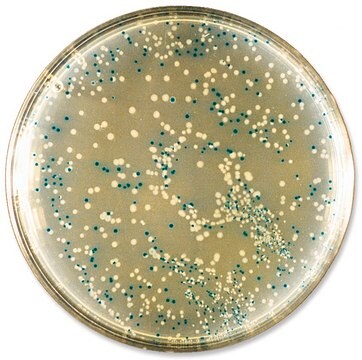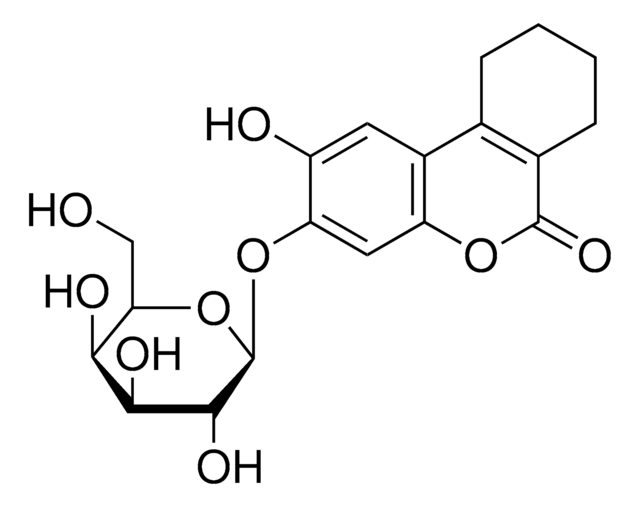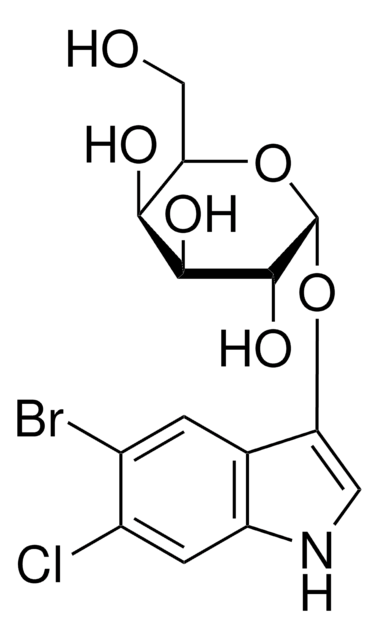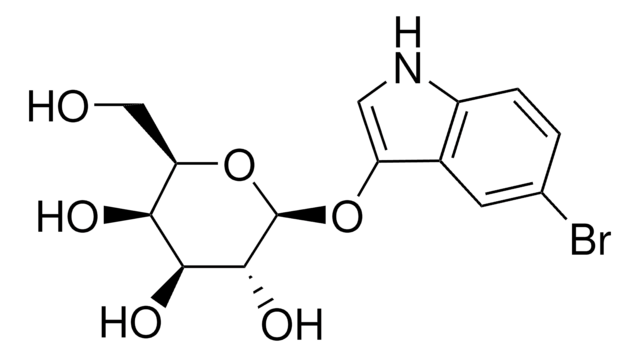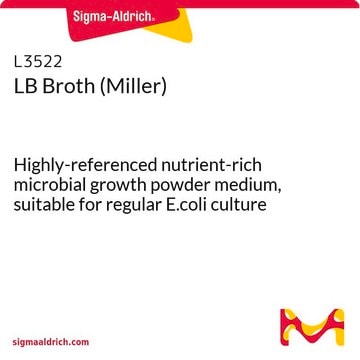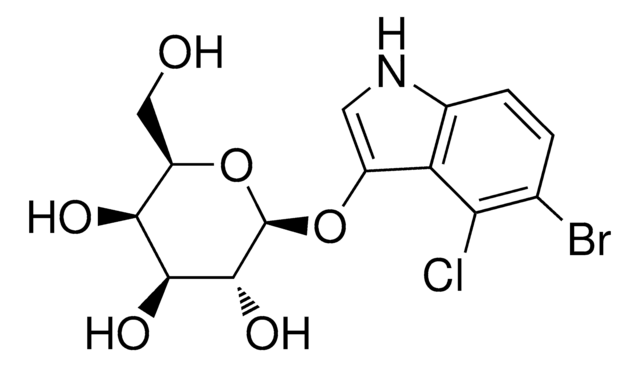Kluczowe dokumenty
C4478
S-Gal®/LB Agar Blend
reagent for selection of recombinant bacterial clones
Synonim(y):
Agar Blend
About This Item
Polecane produkty
klasa czystości
for molecular biology
Poziom jakości
sterylność
non-sterile
Postać
powder
metody
microbiological culture: suitable
przydatność
suitable for β-galactosidase test
nonselective for Escherichia coli
nonselective for coliforms
Zastosowanie
food and beverages
microbiology
temp. przechowywania
room temp
Powiązane kategorie
Opis ogólny
Zastosowanie
Cechy i korzyści
- More intense color contrast than X-gal
- Water-soluble and autoclavable for easiest use
- Convenient, pre-mixed media
Komponenty
Tryptone, 10
Yeast extract, 5
Sodium chloride, 10
Agar, 12
S-Gal, 0.3
Ferric ammonium citrate, 0.5
IPTG, 0.03
Zasada
Uwaga dotycząca przygotowania
Inne uwagi
formulation. A medium prepared with S-Gal® is moderately dark due to the presence of ferric ammonium citrate. This darker background often provides enhanced contrast for automated colony counting or isolation.
Informacje prawne
produkt powiązany
Kod klasy składowania
11 - Combustible Solids
Klasa zagrożenia wodnego (WGK)
WGK 3
Temperatura zapłonu (°F)
Not applicable
Temperatura zapłonu (°C)
Not applicable
Środki ochrony indywidualnej
Eyeshields, Gloves, type N95 (US)
Certyfikaty analizy (CoA)
Poszukaj Certyfikaty analizy (CoA), wpisując numer partii/serii produktów. Numery serii i partii można znaleźć na etykiecie produktu po słowach „seria” lub „partia”.
Masz już ten produkt?
Dokumenty związane z niedawno zakupionymi produktami zostały zamieszczone w Bibliotece dokumentów.
Klienci oglądali również te produkty
Nasz zespół naukowców ma doświadczenie we wszystkich obszarach badań, w tym w naukach przyrodniczych, materiałoznawstwie, syntezie chemicznej, chromatografii, analityce i wielu innych dziedzinach.
Skontaktuj się z zespołem ds. pomocy technicznej